Any homeowner would like the home to be comfortable all year round. Comfort includes having a cool and cozy atmosphere in your home in terms of temperature. A ductless air conditioner will do the trick to achieve the ideal temperatures in your home. But, can you install it on an inside wall? We did extensive research and asked experts this very question. Here is the answer they gave us.
Yes, you can install a ductless air conditioner on an inside wall. A ductless air conditioner or a mini-split, doesn't weigh much, and an inside wall can carry its weight. Therefore, it can be mounted or installed on almost any wall in the home.
There are some limitations, though, in the installation process. Keep reading as we explain what issues might arise when installing a ductless air conditioner.

Installing A Ductless Air Conditioner On An Inside Wall
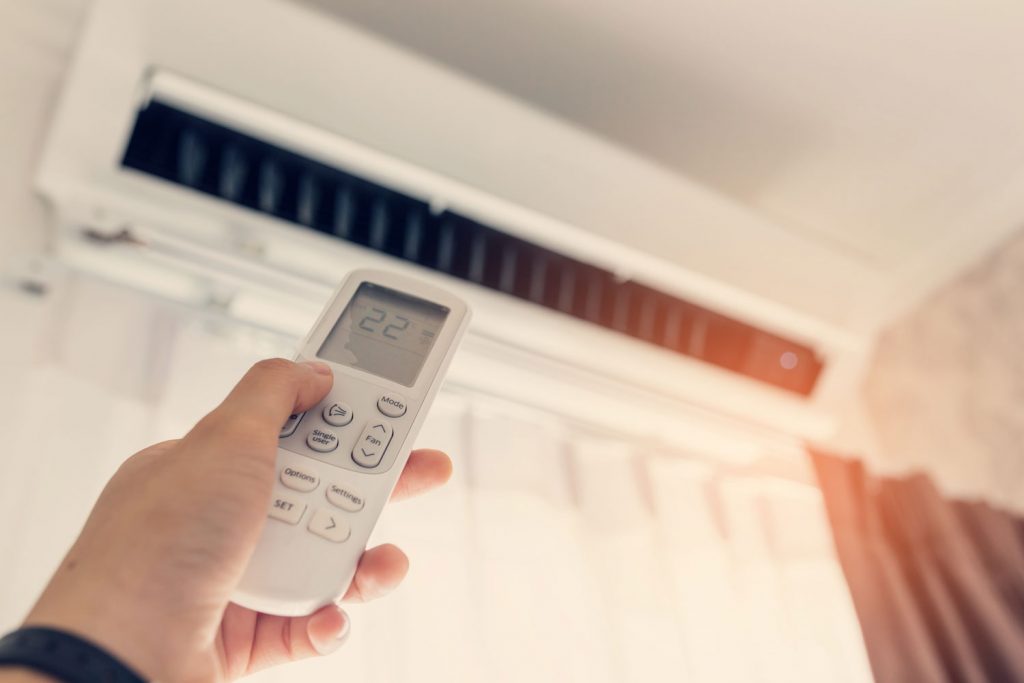
You can install a ductless air conditioner on an inside wall, but it will be costlier. The cost elevates because the connecting lines might have to pass via an attic or crawl space.
The wiring has to travel through the length and breadth of the home to the basement or the attic. The distance from the room that needs to have a ductless air conditioner installed to the crawl space or attic might be longer.
How Many Parts Does A Ductless AC Come In?
The ductless air conditioner comes in two parts. There's an indoor unit and an outdoor unit. Remote controls are available for each inside unit.
The indoor unit can be placed 50 feet apart from the outdoor unit. The functionality of the two will not be interfered with despite the distance.
How To Install a Ductless Air Conditioner
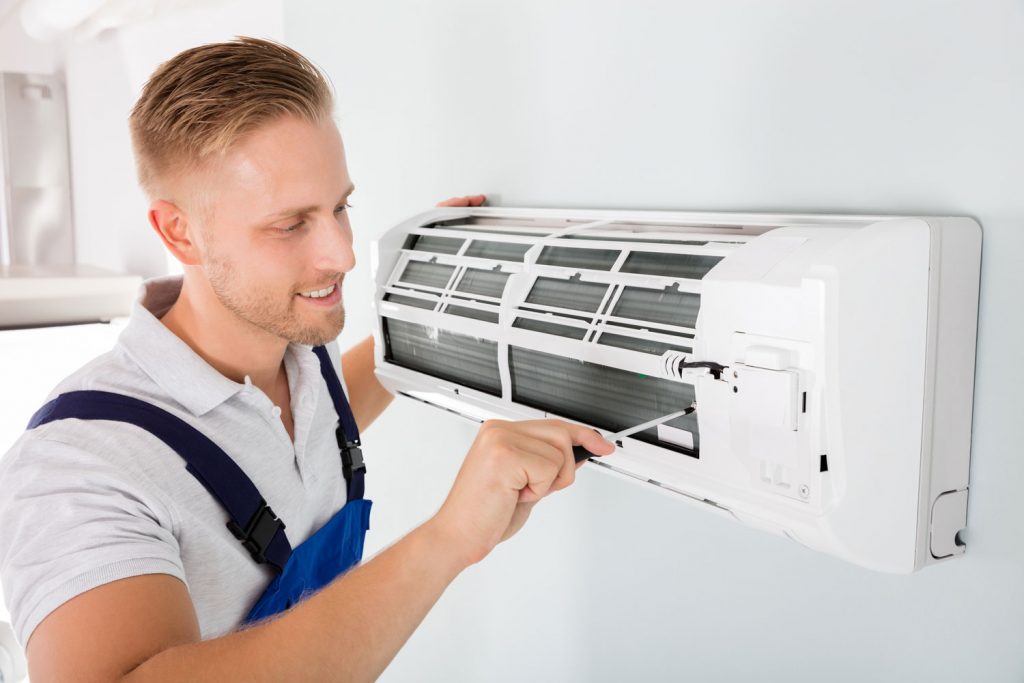
Before you commence installation, ensure that you have everything ready. Have the two units, the indoor unit and the outdoor condenser, ready.
The units should be in good order with no scratches or torn boxes. Check to see that all the necessary wires, cords, and screws are available in the package.
The user manual will point out what you should expect to find in the package. The installation will require tools and a professional to do the wiring and the final steps.
Tools Required
You should have some basic tools to install a ductless air conditioner. The tools that you'll need for mounting and installing the units include:
- Torque Wrench: You'll use this to tighten bolts and screws.
Check out this torque wrench on Amazon.
- Allen Wrench: This wrench is for screws or bolts with hexagonal recessed heads.
- Hole Saw: This saw can cut large holes into and through a wall. It doesn't cut the core material of the wall and isn't messy. The Hole Saw is often mounted on a power drill for a better job.
Have a look at this hole saw on Amazon.
- Vacuum Pump: The pump will remove any air and moisture from your air conditioner system for better performance. Use the vacuum pump before you finish mounting the outside unit.
- A Cordless Power Drill: Use the power drill to drill holes and tighten screws when mounting the units.
Check out this cordless power drill on Amazon.
- Manifold or Micron Gauge: This gauge helps remove contaminated refrigerants and will check the pressure.
- A Spirit Level: It will ensure that the air conditioner is mounted straight.
- Protective Gear: To protect yourself from cuts or bruises during the installation, wear protective gear such as gloves and goggles.
- Others: Other necessary items are screws, rubber washers, drill bits, and screwdrivers.
Installation Procedure
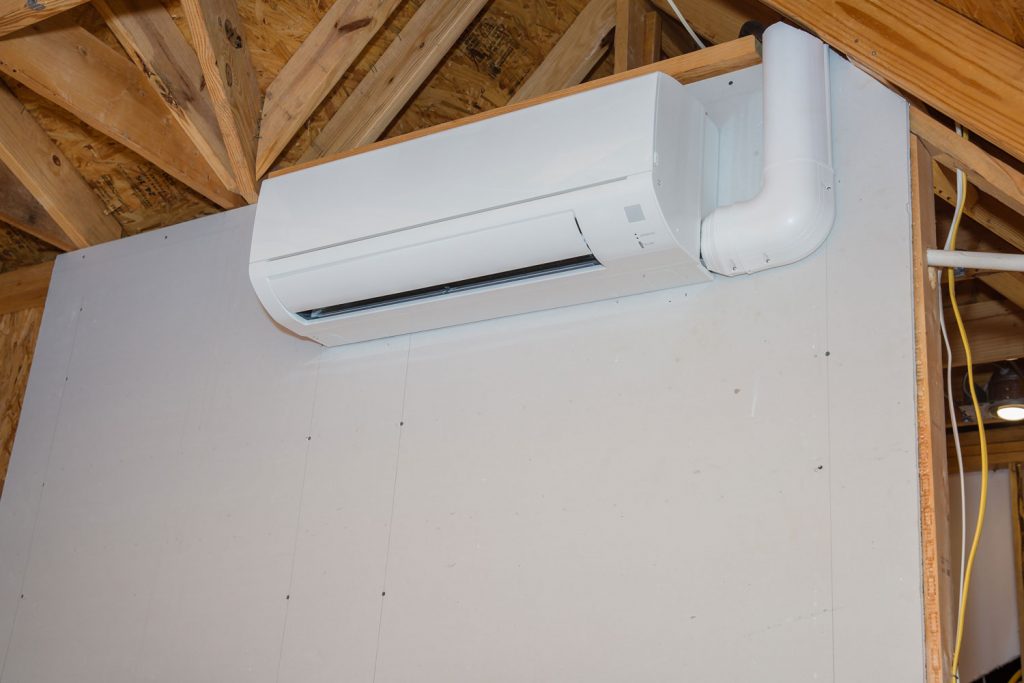
You may commence work when all the necessary tools are assembled. Pinpoint a suitable area to mount the unit before you start the installation.
- Use a cable and pipe detector to see if there are any cables and pipes on the section you want to mount the inside unit. Installing a ductless air conditioner during the construction of inside walls is easier. The wiring can be easily hidden before putting the drywalls.
- Once you have the right section, mark the outline of the unit using the wall bracket at the back of the indoor unit. You can also use a template that comes with the inside unit. Screw the bracket on the wall.
- Next, drill the hole for the communication wire and the copper wiring in the unit.
- Set the unit on top of the mounting bracket, and feed the wires through the drilled hole. Ensure that it sits well and firmly.
- Align the line set and drill the appropriate holes where the line set will pass through. Connect the line set with the indoor units. Once the lines are threaded together, tighten them using the wrenches.
- Tie the tightened lines with sound deadening pads before insulating them. Use foam to insulate the line set to avoid moisture that might corrode the lines.
- Connect the drainage hose to the drainage hose whip of the outside unit. Don't forget to insulate the drainage pipe to avoid mold growth.
- The housing safety code requires you to spray a fire foam or use a fire caulk in all the penetrations. It prevents smoke from spreading through the walls. It'll also stop drafts that might feed a fire.
- Next, look for a suitable place for the outside unit. You could mount the condenser on the outside wall of the house. Alternatively, place the unit on the ground. To protect the outside unit, set it on concrete blocks. Manufacturers provide plastic pads for the outdoor unit in the package. Now attach the line sets to the condenser.
- Finally, invite an expert to wire the outdoor unit to the panel and open the refrigerant valves to recharge the whole system.
Here is a video demonstrating the installation of ductless air conditioners on onside walls:
Note: You may have several indoor units for each room but a single outdoor unit. All the indoor units will be connected to this single outdoor unit.
Advantages & Disadvantages Of A Ductless Air Conditioner
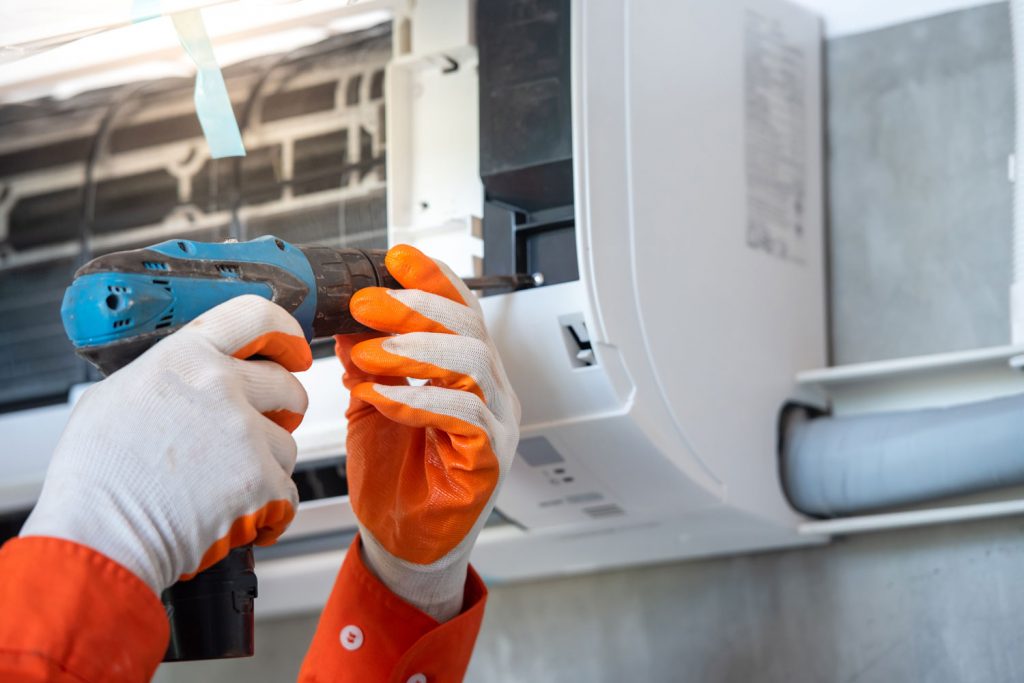
Use a ductless air conditioner to cool or heat any space in your home. Most homeowners prefer ductless air conditioners. They have more advantages compared to a central heating system.
The most prominent advantages are the following:
- Quiet: Despite some of these ductless air conditioners being very powerful, they run very quietly. This makes them ideal for a house with babies and toddlers.
- Efficient: These ductless air conditioners are cost-efficient because they use power only when turned on in a particular area. A central heating system will run in all areas where installed. It won't matter if the area is occupied or not.
- Easy Installation: A ductless air conditioner is easy to install for a DIYer, although you'll need a professional for the final steps of the installation.
- Compact Size: A mini-split or ductless air conditioner is compact and doesn't take up a lot of wall space. They neatly fit in most home decor. They have a contemporary look and standard white color.
Ductless air conditioners or mini-splits have a few disadvantages. These disadvantages you'll find below don't deter most homeowners.
- Costly: The cost of initial installation of a ductless air conditioner in each living area might shoot through the roof. The cost is high compared to a central heating system.
- Size: Pick the right size ductless air conditioner for a particular area for effectiveness. Otherwise, you risk having an area not well heated or cooled.
How Much Does It Cost To Install A Ductless AC
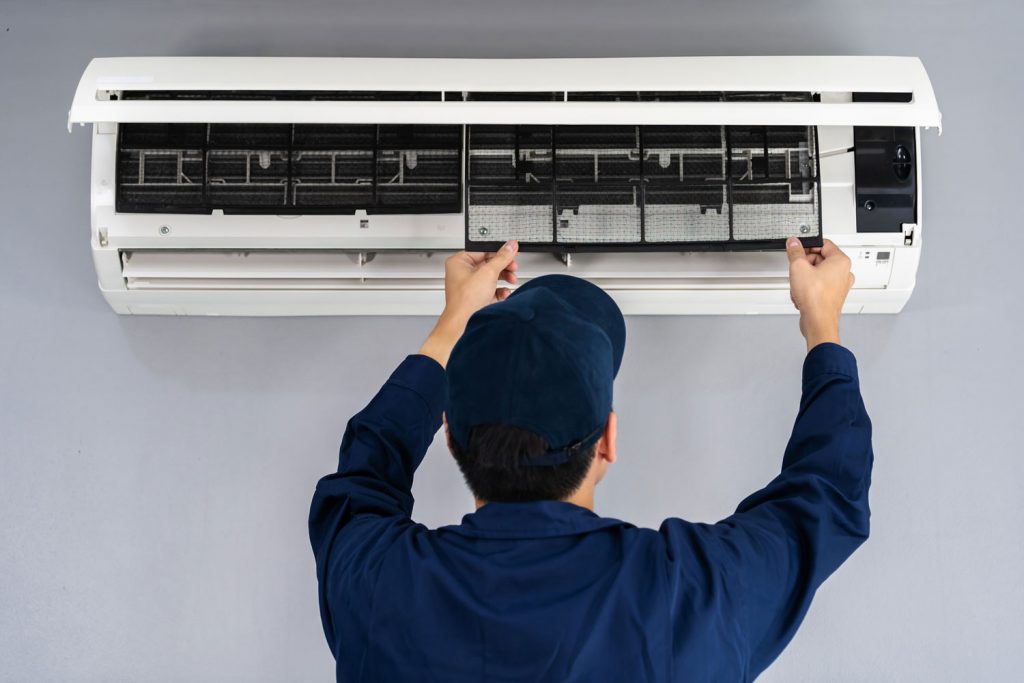
The cost of installing a ductless air conditioner will depend on the area to be covered. It costs from $2,000 to $14,500. The average cost is about $4,000.
It is always cheaper to install a mini-split directly on an outside wall than on an inside wall. But the cost might also differ from state to state and the brand you wish to install. Remember that the more units you wish to install, the more expensive the cost of installation.
Parting Shot
A ductless air conditioner or a mini-split will effectively heat or cool your home. Each area can have regulated climate control at your convenience.
There are several brands of ductless air conditioners in the market for homeowners to choose from. Although the installation is costly, it will save you some money on power bills in the long run.
Here are interesting posts for you to check out:



